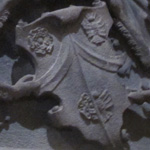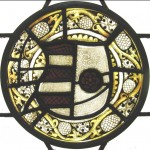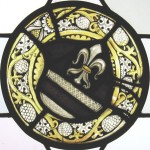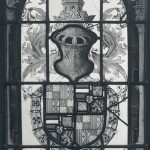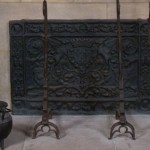Thursday, December 8, 2011
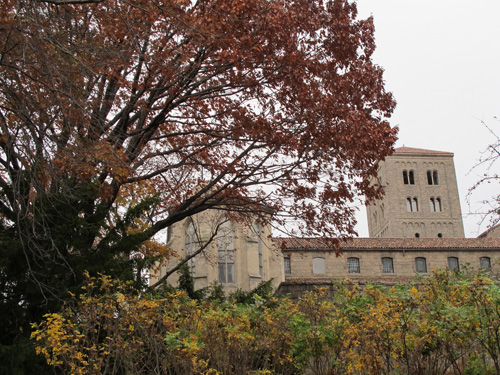
An Eastern black oak (Quercus velutina) outside The Cloisters.?? Photograph by Theo Margelony
Its wood is strong and hard and durable. Its beams supported high roofs over castles and churches. Its boards closed off doorways and gateways, denying passage to all but the most obstinate or determined, and were used to create interior floors from small chambers to large halls. Panels of it were shaped and carved into chests and choir stalls. Its planks were worked into ships and bridges, wagons and carts. Read more »
Tags: acorn, fructed, heraldry, oak, Quercus
Posted in Plants in Medieval Art | Comments (7)
Friday, September 2, 2011
Plantagenet. Since you are tongue-tied and so loath to speak,
In dumb significants proclaim your thoughts:
Let him that is a true-born gentleman
And stands upon the honour of his birth,
If he suppose that I have pleaded truth,
From off this brier pluck a white rose with me.
Somerset. Let him that is no coward nor no flatterer,
But dare maintain the party of the truth,
Pluck a red rose from off this thorn with me.
???Henry VI, Part 1, Act 2, Scene 4
After the fleur-de-lis, the rose is probably the second most common floral charge to appear on heraldic shields. That’s quite understandable, since the rose’s emblematic associations ranged from the Virgin Mary to the Five Wounds of Christ to romantic love. In the military context of knights and noble families, the rose also suggested the fierce and often impenetrable thicket of prickled branches in which it grows. The white roses strewn around the fearsomely armed lion rampant that occurs on the shield of Finland might have raised just such an association in the minds of beholders. Alternately, roses might also have been chosen as a play on a name???the arms of the German town of Rosenberg in Baden-W??rttemberg, for example, or the Baltic baronial family von Rosen.
Read more »
Tags: fleur-de-lis, heraldry, roses, Shakespeare, Tudor
Posted in Plants in Medieval Art | Comments (1)
Friday, March 11, 2011
At certain times of the year in the medieval rural landscape, it would have been common to see plump sheaves of grain standing in sunny fields like so many golden tokens of agricultural wealth and prosperity, as numerous depictions???even in some of the most sumptuous manuscripts of the Middle Ages, such as the Belles Heures of the duke of Berry???attest. At harvest, the wheat was cut at the base of the stalk with a sickle and then gathered up in large armfuls and tied about the middle. The resulting bundles were left spaced and standing upright in the fields, which allowed them to dry even if it happened to rain before they could carted off for threshing.
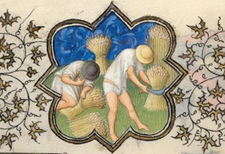

Details of illuminations from Folio 8r and Folio 9r from the Belles Heures of Jean de France, duc de Berry, 1405???1408/9.
Read more »
Tags: barley, Belles Heures, blazon, Bolton, caraway, carrot, Cheshire, Comyn, cumin, Cuminum cyminum, garb, Geoffrey Chaucer, gold, grain, Grosvenor, heraldic, heraldry, John of Gaunt, oat, Owain Glynd??r, parsley, rye, Scrope, sheaf, sheaves, shield, wheat
Posted in Plants in Medieval Art | Comments (1)
Monday, April 26, 2010
It’s always a special joy to be at The Cloisters in the spring when the stirring and bursting of the plants in the gardens heralds the arrival of nature’s new season with such festive trumpets of color. The reflection of the garden’s plants in the Museum’s collections is wide and well recognized, especially to those who are frequent, or even occasional, visitors to the flowered meadows of the Unicorn Tapestries or the exuberant borders of the Belles Heures of the duke of Berry. One place that shouldn’t be overlooked while visiting The Cloisters, though, is the field of heraldry. Read more »
Tags: fleur-de-lis, fleur-de-lys, heraldry, Iris pseudacorus, Lilium candidum, lily, loys, Song of Solomon
Posted in Plants in Medieval Art | Comments (9)


